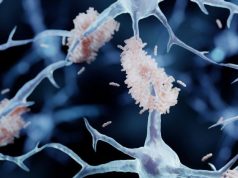MRI + computer algorithm indicate which high-risk babies might develop autism spectrum disorder
THURSDAY, Feb. 16, 2017 (HealthDay News) — By using magnetic resonance imaging (MRI) to evaluate size, surface area, and thickness of the cerebral cortex as an infant reaches the 6-month and 12-month marks, it may be possible to predict autism spectrum disorder (ASD) risk with 90 percent accuracy, according to research published online Feb. 15 in Nature.
The new screening approach was tested on 148 infants, of whom 106 were deemed to be at high risk for developing ASD because of familial background. MRI scans were conducted on the babies at the 6-month, 1-year, and 2-year marks. Key brain measurements were used in a computer-generated algorithm, which developed prediction scores based on two observations.
First, infants who develop ASD by age 2 appear to undergo relatively high brain-surface growth between ages 6 months and 1 year. The second observation: High brain surface area growth in the first year of life is linked to a higher overall brain size in the second year of life. This brain overgrowth is an established marker for ASD risk, according to the researchers. The computer program was able to accurately predict ASD in eight out of 10 of those infants who developed ASD by age 2. Also, the approach was nearly perfect in predicting which high-risk babies would not develop ASD by age 2.
“These findings suggest a cascade of brain changes across the first two years of life that result in the emergence of autism at the end of the second year,” senior author Joseph Piven, M.D., director of the Carolina Institute for Developmental Disabilities at the University of North Carolina in Chapel Hill, told HealthDay. “This finding suggests that in the future, early brain imaging may be able to predict later autism risk and identify those infants who might benefit the most from intensive interventions before the symptoms emerge, and during a time when the brain is most malleable.”
Abstract
Full Text (subscription or payment may be required)
Copyright © 2017 HealthDay. All rights reserved.








